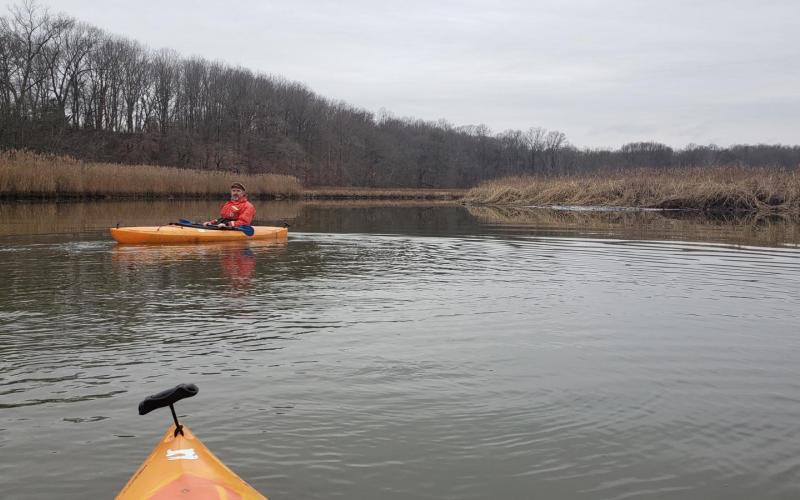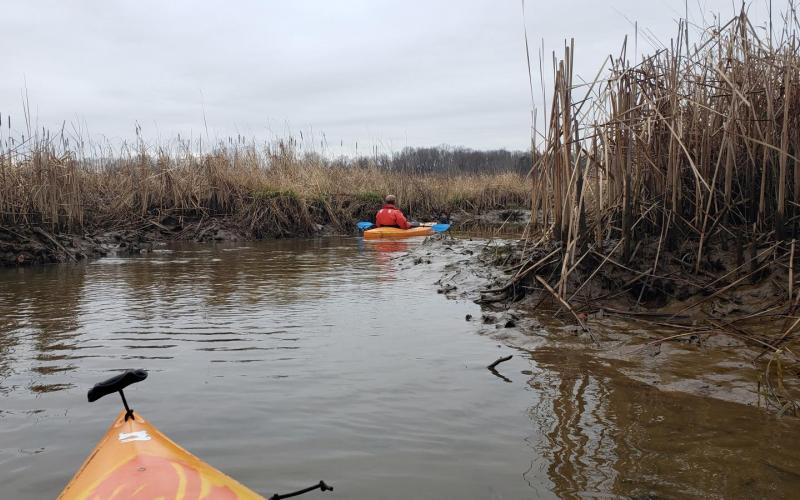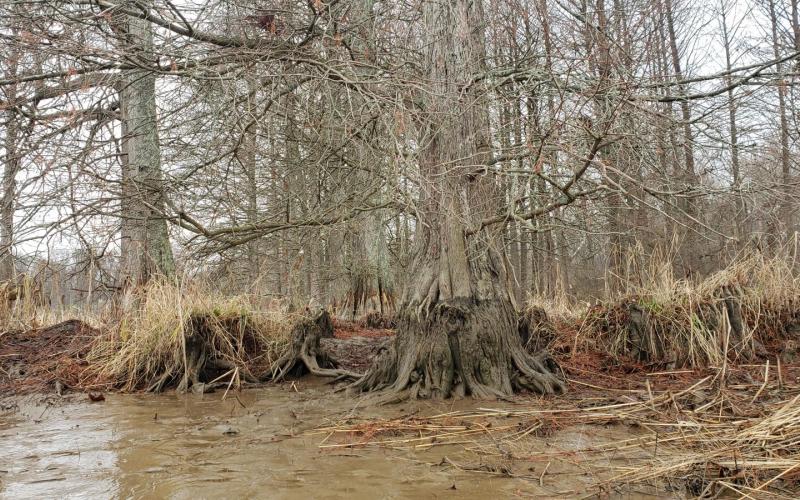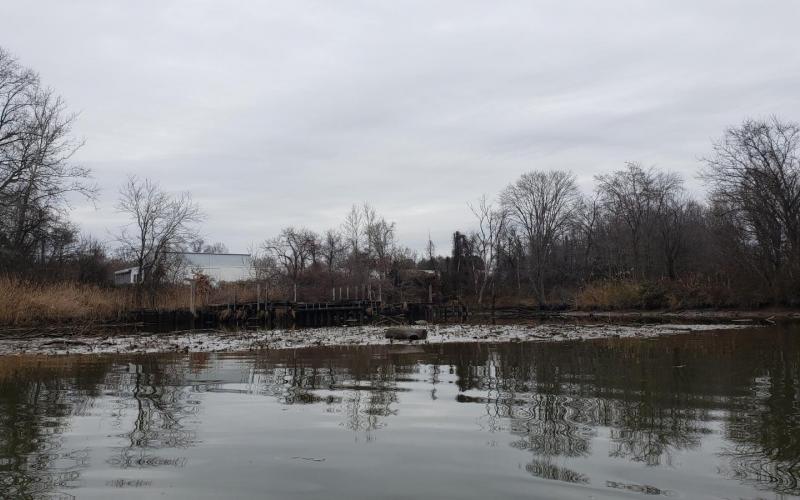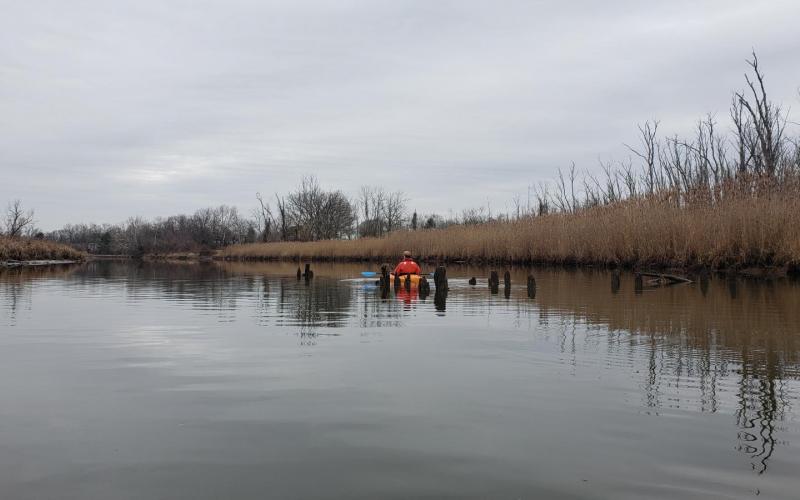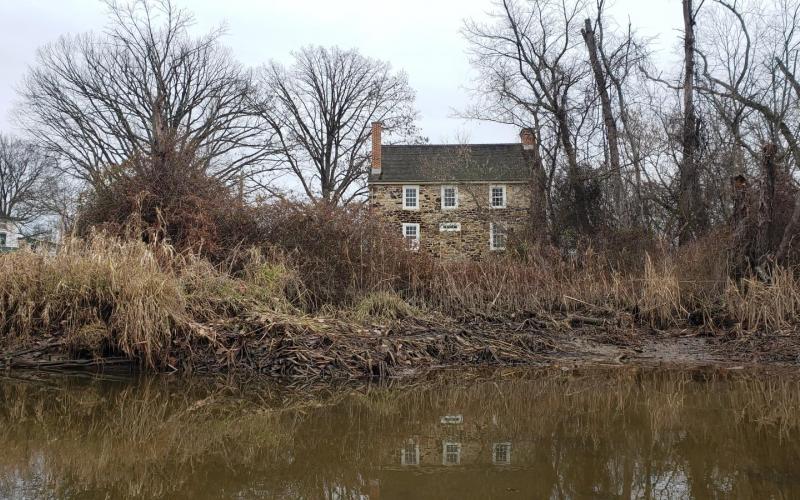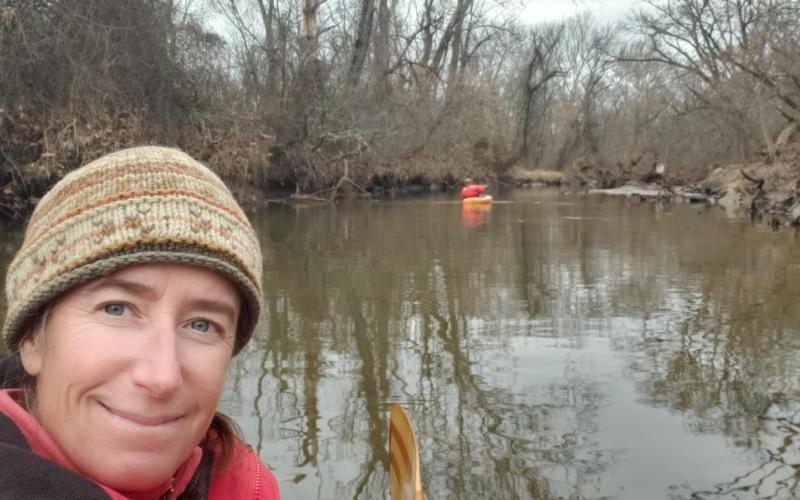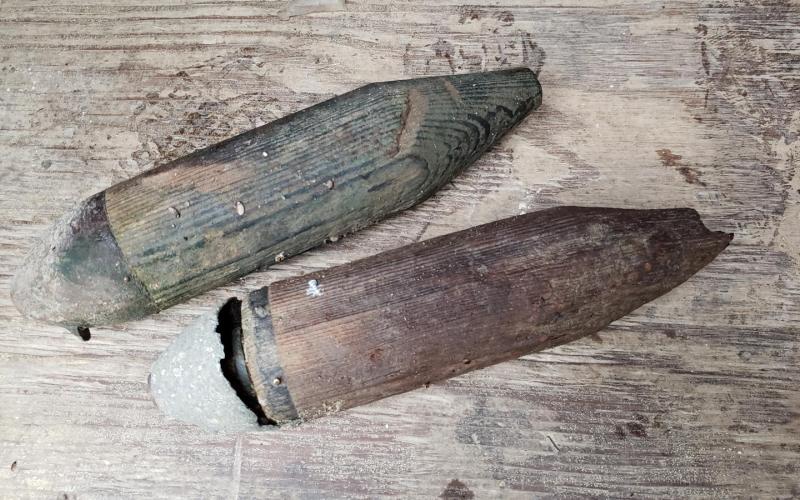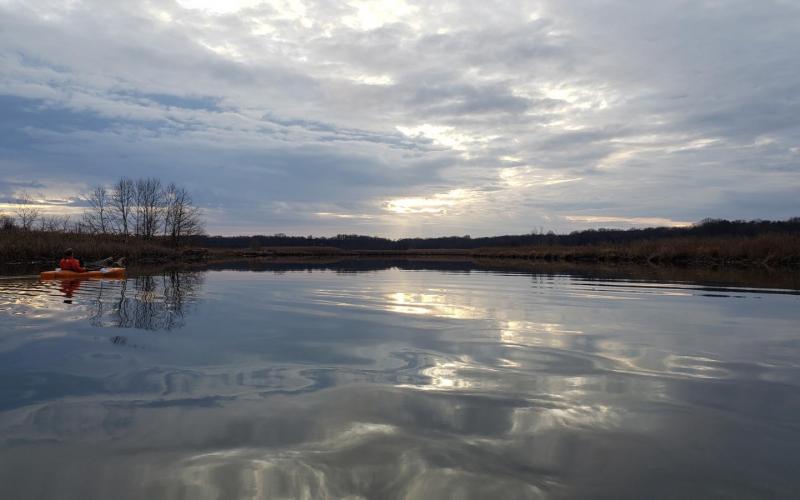Dobbs and I explored the Elk River at its very north end, where it's fed by the Little Elk and Big Elk Creeks. The Elk River Park Boat Launch offers a good starting place (and it's free for kayaks). For almost 200 years, this now-tranquil stretch of water saw plenty of action. In 1735, Zebulon Hollingsworth, Sr. began buying the land that would become Elk Landing and provide a convenient point of shipping between Baltimore and Philadelphia. In 1777, British invaders under General Howe disembarked from about 250 vessels which had sailed up the Chesapeake Bay. About 15,000 to 18,000 British troops passed through en route to capture the capitol in Philadelphia. The area continues to be involved in the war until around 1813. By 1840, railroads and the C&D Canal have pushed Elk Landing into the shipping background. Then, in 1887, Henry Diebert moved from Pennsylvania with his family and a work crew to begin building barges on Little Elk Creek. The barges ranged from 100-200' in length, which is something to imagine while floating alongside the site of Diebert Brothers today. Most of the creek is scarcely a foot deep, and I doubt it's 100' wide. Upstream, from 1938 until 1945, Triumph Explosives produced munitions for the war effort - we're considering them the "smoking gun" for the ordinance we found. Last of all, Trojan Boat Company opened a plant on the Elk River in 1965 and would continue building boats there until 1989.
Today, without looking closely, a person might see only marsh and an old stone tavern; with a little more mucking about and alot more imagination, history comes alive!
